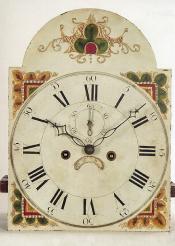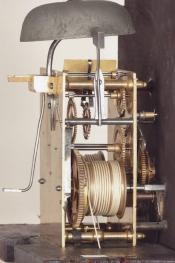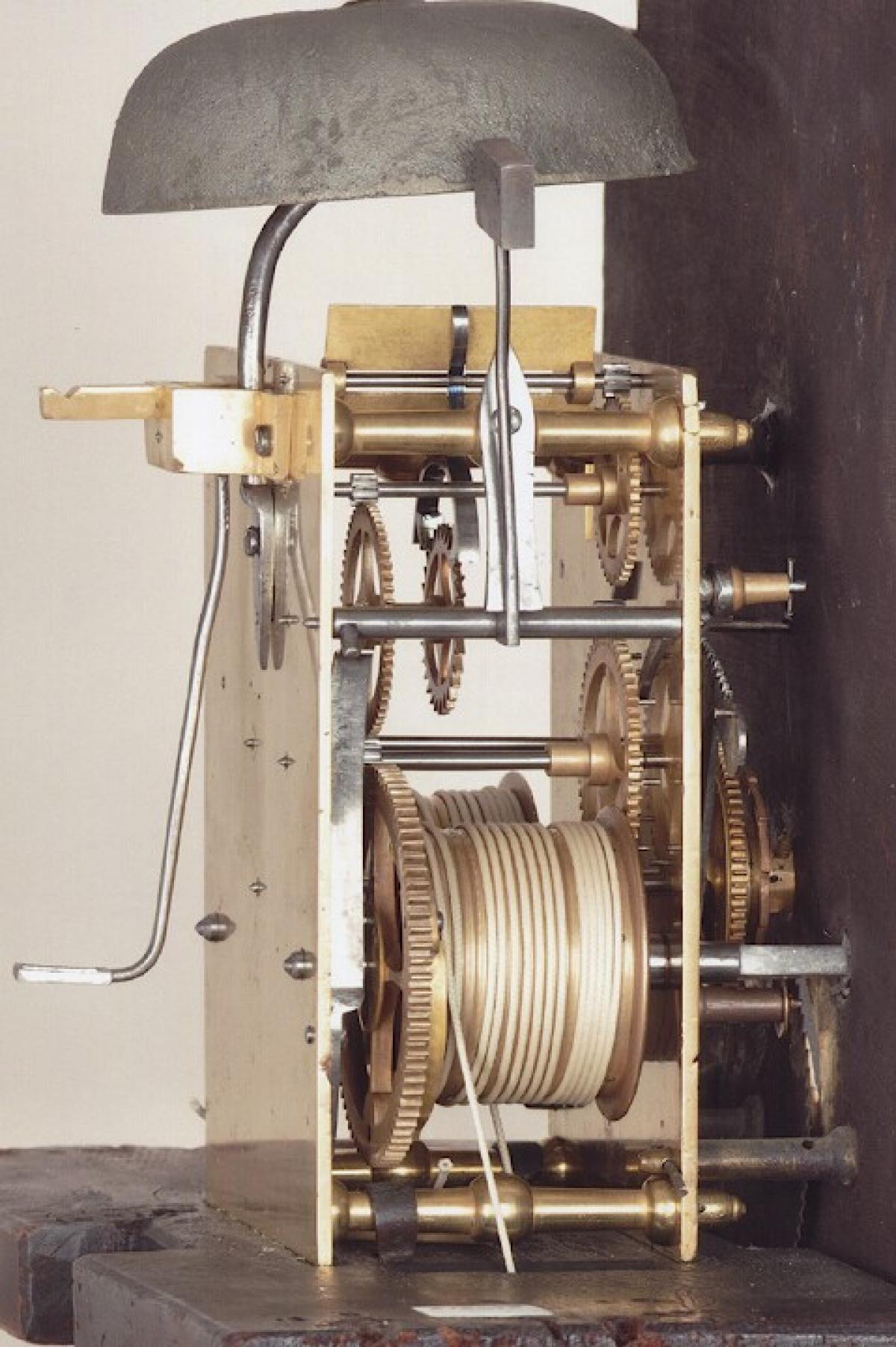Barton Stillman of Westerly, Rhode Island. Tall case clock dated 1814 and numbered 4. 212098.
This is a very pretty tall case clock made by the Westerly, Rhode Island clockmaker Barton Stillman.
Barton Stillman was the son of Joseph and Eunice (Stillman) Stillman. His birth date is unknown. His brother Paul was born in 1782 and died in 1810. His Cousin William Stillman is a better-known Clockmaker from the same area. The family was known as a family of inventors. Barton is listed as working in Burlington, Connecticut, in 1790. A tall clock we discovered in 2015 is signed on the snail, "Barton Stillman No. 4. 1814."
This inlaid cherry-cased example has nice country proportions and an exciting inlay presentation. The case features an older finish that has a very good mellow color. This case stands on a cutout bracket base. A shaped apron is incorporated into the design. The base panel is highlighted with a string line inlaid border, a double line inlay oval, and a mahogany inlaid oval is centered. Many of these patterns are repeated in the waist section. Fluted quarter columns are fitted into the sides of the case. These terminate in turned wooden capitals. The bonnet is a swan's neck form. Three plinths support the three brass finials. Smoothly turned and shaped bonnet columns visually support the upper bonnet molding. These are free-standing. The arched bonnet line inlaid door is also fitted with glass and opens to access the painted iron dial.
This painted dial is very colorful. The time track features hours that are indicated in Roman numerals. The five-minute markers are painted in Arabic form. A subsidiary seconds dial and month calendar can be seen inside the time ring. A gold band separates the center business section from the colorful decorations. Each of the four spandrels areas is decorated with raised gesso work, predominately highlighted in gilt paint. Shades of gold, green and red make for a striking combination. This is nicely executed. This dial was painted in Boston by the Nolen and Curtis firm.
This fine movement is constructed in brass and is of good quality. Four-turned pillars support the two brass plates. Hardened steel shafts support the polished steel pinions and brass gearing. The winding drums are grooved. The escapement is designed in a recoil format. The movement is weight driven and designed to run for eight days on a full wind. It is a two-train or a time-and-strike design having a rack and snail striking system. As a result, it will strike each hour on the hour. This is done on a cast iron bell which is mounted above the movement.
This clock was made circa 1814 as so dated. The height of this example to the top of the center finial is 88.25 inches tall. The case is 19 inches wide and 10.25 inches deep at the lower bonnet molding.
It is inventory number 212098.
Barton Stillman was the son of Joseph and Eunice (Stillman) Stillman. His birth date is unknown. His brother Paul was born in 1782 and died in 1810. His Cousin William Stillman is a better-known Clockmaker from the same area. The family was known as a family of inventors. Barton is listed as working in Burlington, Connecticut, in 1790. A tall clock we discovered in 2015 is signed on the snail, "Barton Stillman No. 4. 1814."














